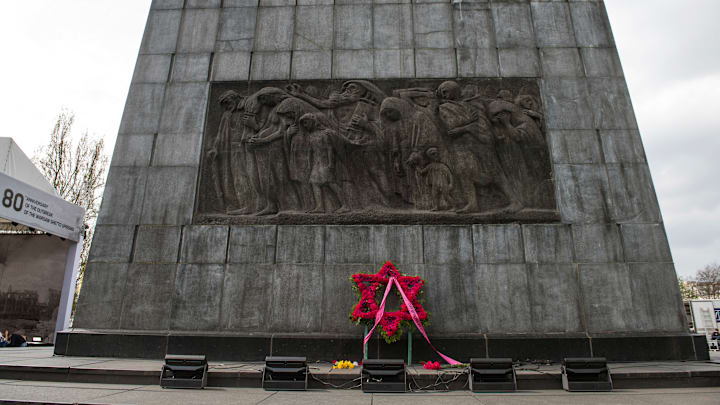Something as horrific as the Holocaust does not simply happen. It is a terror that creeps in slowly, gaining in cruelty until ordinary citizens can stand aside while millions of people are massacred. Along the way, there is bound to be resistance. One of the greatest examples of mass resistance during the Nazi regime was the Warsaw Ghetto Uprising, where the Jewish people showed that they would not go down without a fight.
While the official Warsaw Ghetto Uprising took place between April 19 and May 16, 1943, there was an early spark of rebellion that came in January. When the Germans came for a second round of mass deportations, many residents of the ghetto decided to fight back. This is an often overlooked moment, deserving of being honored on its 81st anniversary.
Warning: The content below includes pictures and personal accounts of the Warsaw Ghetto Uprisings, which may not be suitable for younger audiences.

What was the Warsaw Ghetto?
After invading Poland in 1939, the Nazis set to work removing Jewish people from the general population. While many people think instinctively of the extermination camps they created, these were pre-dated by relocation efforts, which attempted to get the Jewish people out of sight and kill them through deliberate neglect.
The Warsaw Ghetto was established in November of 1940, and it was the most highly-populated ghetto in Nazi-occupied Europe. According to the Holocaust Encyclopedia, the ghetto housed around 400,000 people for the majority of its duration. In 1943, there were only 70 or 80 thousand left.
The residents knew that, wherever their neighbors had been taken, it was not good. There were rumors about the death camps, and it seemed like death for those still in the ghetto was inevitable. In response, they created two secret militias to fight back when the Germans continued the supposed relocations.

What happened between January 18 and January 21, 1943?
On the morning of January 18, the Nazis came to gather thousands of remaining Jews to be transported to Treblinka. There wasn't an organized plan of rebellion, but the people in the Warsaw Ghetto knew they might not have another opportunity to fight back. So began the January Warsaw Ghetto Uprising.
Some of the fighters mixed in with those being gathered for transit, planning to shoot the Germans while their guard was down. Other simply refused to go, running and hiding. Many died and a few thousand were still deported, but this rebellion caught the Nazis off guard and led them to postpone future movements.
"At first, the Germans were surprised. They became confused and lost control of the situation. We could hear them shouting: “The Jews are shooting at us!” Several German soldiers were shot dead. More groups of fighters joined the battle afterwards. "Cywia Lubetkin
The full rebellion took place for three days, from January 18 to January 21. When the Germans decided to retreat, many of the Jewish realized that resistance may be their only chance to make it out alive. For those who felt their own fates were already sealed, they were willing to fight to hurt their enemy and to give others the chance to survive.
According to Emanuel Ringelblum, a historian and resident of the ghetto:
"It seems to me that people will no longer go to the slaughter like lambs. They want the enemy to pay dearly for their lives. They’ll fling themselves at them with knives, staves, coal gas…they’ll not allow themselves to be seized in the street, for they know that work camp means death these days."The Journal of Emanuel Ringelblum

How did this event impact future resistance movements?
Because the first Warsaw Ghetto rebellion succeeded in slowing the German plans, it gave the remaining residents hope that they could mount a proper uprising. While they didn't know if their actions would save anyone, they knew it had a better chance than being compliant with forces determined to slaughter them.
Between January and April, the residents of the Warsaw Ghetto built places to hide throughout the ghetto. Those who could negotiated with the Polish Underground to acquire weapons. When the Nazis returned to finish the deportation in April, they were unprepared. They retreated. However, it only held off the inevitable, as the Nazis had no reservations when killing anyone who resisted.
Nearly all of those who were captured were either killed in a labor camp or sent directly to Triblenka. However, the time bought by these rebellions allowed some of the residents to escape. An estimated 20,000 people survived the Ghetto Uprising and hid in Warsaw for the duration of the war.
There was nothing joyful in these small victories, but there was hope. Other ghettos formed their own resistance groups, and while the Nazis killed freely, the Jewish population showed that they weren't going to be killed without a fight.
Check back for more segments of "This Day in History" on Ask Everest.
